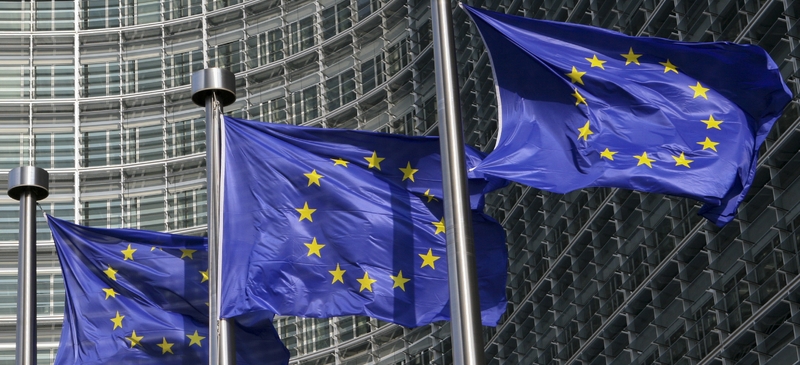
Liberal reforms are no threat to social Europe
Europeans have long sought to reconcile markets with social solidarity. The EU’s economic reform programme, the Lisbon agenda, falls squarely within this tradition. Launched in 2000, its vaulting ambition was to turn the EU into the “most competitive and dynamic knowledge-based economy in the world by 2010”. At the same time, reforms adopted in pursuit of this objective needed to be compatible with “European conceptions of society”. So the EU’s aim was to import US dynamism while retaining a welfarist soul.
Many supporters of the European welfare model believe that the Lisbon agenda has not lived up to this commitment. At best, they believe, the social objectives have been subordinated to the economic ones – particularly since the 2005 mid-term review, which refocused the agenda on growth and jobs. But other critics go further: Lisbon’s economic and social objectives, they claim, are incompatible. Welfare goals are imperilled by ‘neo-liberal’ reforms aimed at boosting the dynamism of EU economies.
Proponents of the stronger view have little difficulty mining evidence to support their case. They often do so by comparing social outcomes in the UK, which has open goods and services markets and flexible labour rules, with those in France or Germany, where markets are more regulated. Income inequality, they rightly point out, is higher in the UK than in the two other countries – as is the share of the population at risk of poverty after social transfers. All of which supposedly proves that ‘Anglo-Saxon neo-liberalism’ is a threat to European welfare models.
This argument seems seductive, but it rests on ‘confirmation bias’ – the selective use of evidence to support a pre-determined conclusion. The evidence that it passes over tells quite a different story. The most equitable countries in the EU (the Netherlands and the Nordics) have competitive product markets and, in the case of Denmark at least, low levels of labour market regulation, while the countries with the highest levels of poverty, inequality and long-term unemployment in the EU (Greece, Italy and Portugal) all have highly regulated markets.
So there is no reason to believe that market liberalisation necessarily leads to increased social inequality. If it did, the Nordic countries would be less equal societies than France and Germany. Nor are high levels of product and labour market regulation the best way of pursuing an egalitarian agenda. If they were, countries like Greece, Italy and Portugal would be the most equal societies in the EU. So what is the trick? How do the Nordics and the Dutch combine liberal markets with the most equitable social outcomes in the EU?
It is tempting to believe that large social transfers must be the main reason. Certainly, social expenditure in the Nordic countries is high – averaging around 28 per cent of GDP. But it is no higher than in France and Germany, which have higher rates of income inequality and unemployment. Nor, for that matter, is it much higher than in the UK. The widespread belief in parts of Europe that the UK is some sort of neo-liberal dystopia overseen by a callous minimal state is a myth. Social expenditure is higher in the UK than in ‘egalitarian’ countries like Finland and the Netherlands.
The reason the Nordics and the Dutch are the most egalitarian societies is that they provide the best education. The correlation between educational and social outcomes across the EU is striking. People with low levels of attainment at secondary education are most exposed to the risk of poverty. Similarly, the more educated people are, the more likely they are to be in work: the employment rate for Europeans with tertiary education is 80 per cent, whereas it is just 50 per cent for those who fail to complete secondary education.
What makes Nordic education systems special? In part, it is their quality: 15 year-olds in Northern Europe perform better in terms of literacy and numeracy than their counterparts in Southern Europe. But the length of schooling is equally important. In Denmark, Finland and Sweden, 90 per cent of 25-34 year-olds have completed upper secondary education, and 40 per cent have gone on to obtain tertiary qualifications. In Portugal, the respective figures are 43 per cent and 19 per cent, while in Greece they are 57 per cent and 25 per cent.
How about the UK? Public spending on education is just under 6 per cent of GDP – around the EU average. The results are mixed. Studies by the OECD show that levels of literacy and numeracy among British 15 year-olds are about the same as in Germany and higher than in France. Numerous international studies, moreover, rank British universities as the best in Europe. So what is the problem? The answer is that one in four children leave school before completing upper secondary education – far above the EU average.
Poverty and income inequality in the UK are often invoked by social egalitarians as a reason for opposing the liberalisation of product and labour markets elsewhere in the EU. But inequality in the UK has more to do with the past and present shortcomings of its education system than with its privatised rail system or liberal labour laws. Inequality is higher in the UK than in many other EU countries because too many people lack basic qualifications – and are hence either unemployable or only fit for menial and poorly-paid jobs.
The belief that the economic and social dimensions of the Lisbon agenda are incompatible is as wrong-headed as it is widespread. The tie that binds them is education. A well-designed education system is one of the most important public goods that the modern state can provide. It has an economic pay-off, because the relationship between a country’s wealth and its human capital is well established. But it is also good social policy, because a high-quality education system is the best way to reduce inequality.
